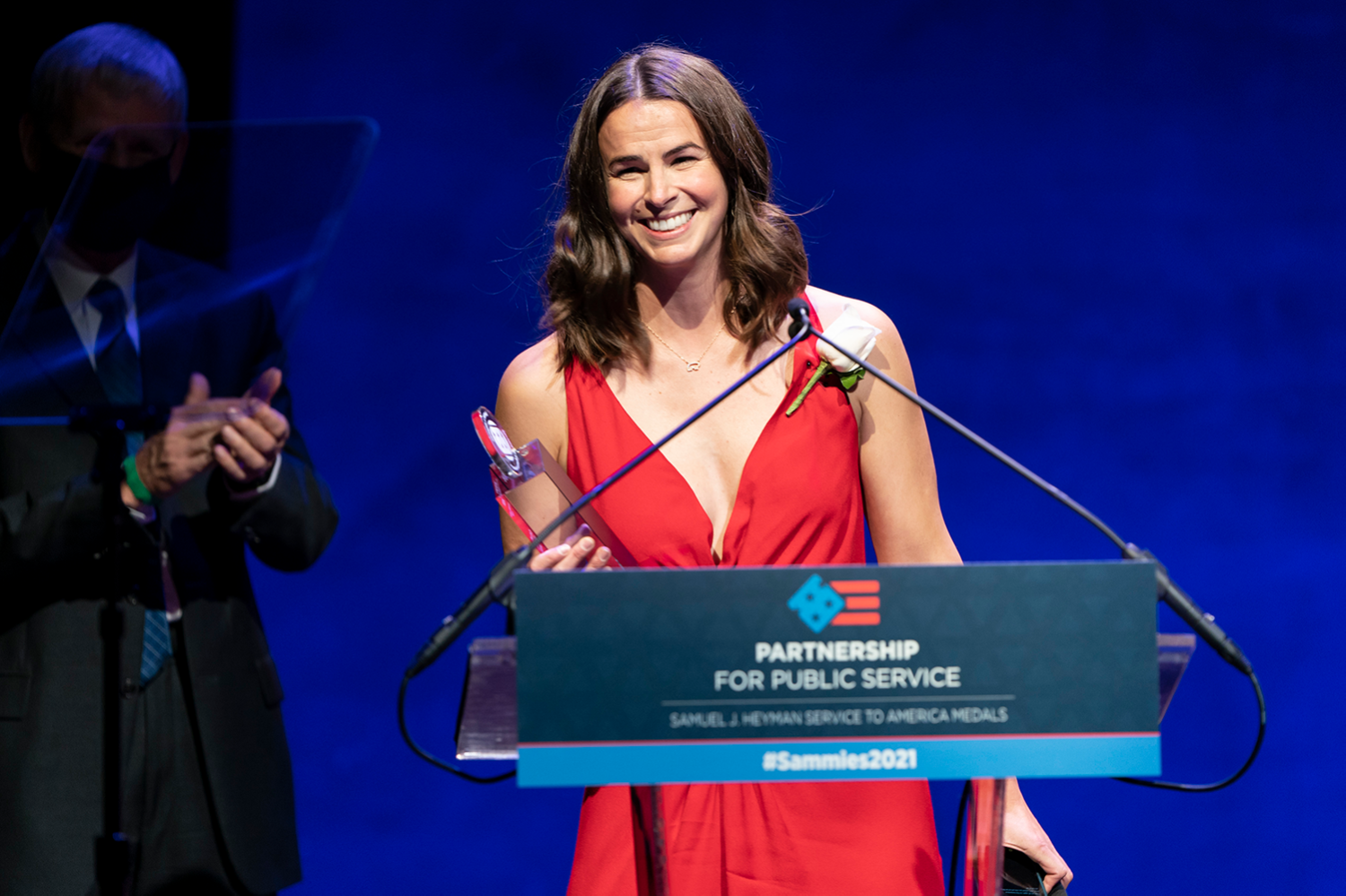
Materials Engineer Improves 3D-Printed Products

NIST materials research engineer Callie Higgins (MElEngr’14; PhD’17) was awarded the federal government's prestigious 2021 Emerging Leaders Samuel J. Heyman Service to America Medal. She was recognized for her invention of a technology that detects and fixes microscopic flaws affecting the reliability of 3D-printed products.
What was the best part of your CU experience?
Probably the relationships I built in graduate school — the classes, labs and research aren’t easy, but when you are surrounded by people all going through the same trials, the load seems to lighten a bit. Another highlight was transitioning to a Research 1 (R1) Institute with pretty rockin’ school spirit for graduate school. My undergraduate program was at a small liberal arts college in California, the University of San Diego, where we were all too distracted by getting to live at the beach to remember our sports teams.
How do you describe your research?
The goal of my research is to help transform traditional manufacturing as we know it. We are working to develop a fundamental understanding of a technology called photopolymer additive manufacturing, with an eye on the healthcare field and tissue engineering. Our process starts with liquid material (photopolymer) that reacts with light — so that wherever you shine light, it solidifies into a 3D part you've designed. This allows you to fabricate structures with an array of chemical and physical properties that would otherwise be impossible to make.
How did you and your team first discover flaws in 3D-printed products?
To 3D print using this technology, the resins must have absorbing qualities in order to confine the printing region to a single layer. For example, think about how the heart has four chambers; if you didn't confine the light to a defined region, you’d end up with a solid, useless blob of tissue-like material. However, this requires the material to have a gradient of properties throughout every layer, where the top is stiff and the bottom is soft. You can imagine the issues that might arise if the stiff regions of one layer didn’t quite attach to the soft region of the next layer. At NIST, we're working to not only understand these regions and how they bind together, but also reverse-engineer them to produce parts with complete 3D control of their mechanical and chemical properties.
Explain how your technology aids in the 3D printing of artificial organs.
The technology we invented to detect and remedy these microscopic flaws that threaten the safety and reliability of photopolymer 3D-printed structures paves the way for the use of this technology in tissue engineering. We built a 3D printer into an atomic force microscope to understand how materials change through-out the printing process. We are now working to reverse-engineer the process to print the ideal environment for cells to develop into representative tissues (like cartilage, bone and lungs).
What advancements do you hope to see in this technology?
I am cautiously optimistic that our work is pushing the field of tissue engineering closer to producing small, representative versions of interesting tissues along the lines of kidneys, cartilage, bones and more. These mini tissue structures, or organoids, have the potential to revolutionize pharmaceutical testing and personalized medicine. What I’ve been struck by and have found wonderful about this community is its commitment to collaboration and the understanding that the only way to truly reach the full potential of this field is by working together. That has me excited, being surrounded by so many brilliant collaborators, all working towards a dream that will potentially change the world.
Interview condensed and edited.
Photos courtesy Callie Higgins

